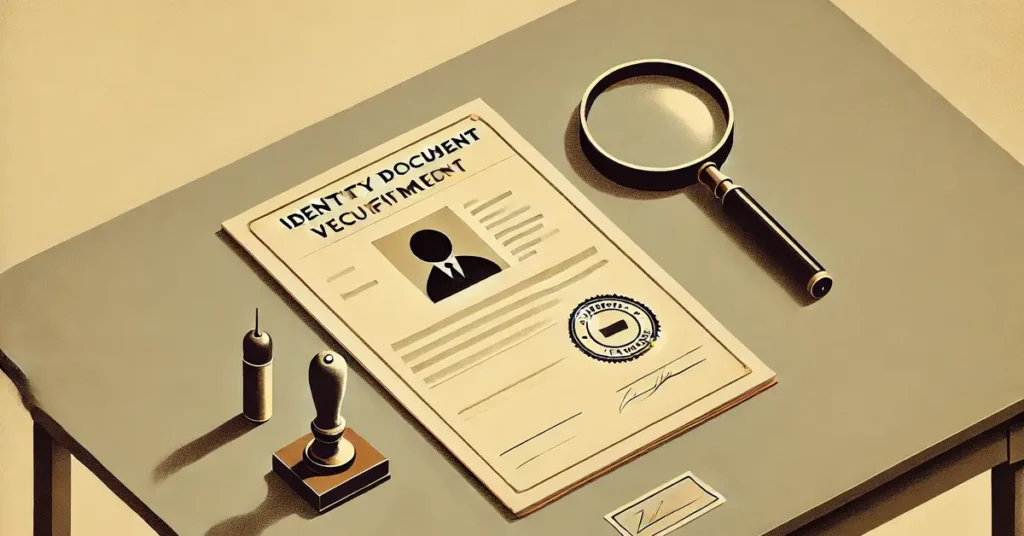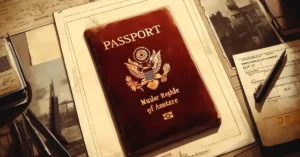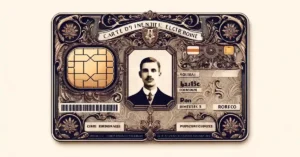Introduction
In a world where administrative, commercial, and digital interactions are growing, verifying identity documents has become an absolute necessity. Whether opening a bank account, signing a lease, applying for a job, or traveling abroad, identity documents are at the heart of validation processes. Ensuring their authenticity effectively combats fraud and identity theft and helps comply with regulatory requirements such as KYC (Know Your Customer) and anti-money laundering (AML-CFT).
Identity documents contain essential information—name, date of birth, nationality—and are protected by sophisticated security features. Yet, their forgery remains a constant threat. That’s why it’s crucial to know the verification methods appropriate for each type of document and the standards of different countries.
Why check the authenticity of identity documents?
Verifying identity documents ensures that a person is who they claim to be. In many sectors—finance, real estate, transportation, and healthcare—this step prevents fraud and protects organizations from legal and financial risks.
Protect yourself against fraud and theft
Identity fraud can lead to significant losses: credits under false names, access to restricted services, or even money laundering. Verifying a document limits these risks by detecting anomalies before they cause damage.
Comply with legal obligations
Businesses often have to comply with strict regulations. Failure to verify identity can lead to penalties for non-compliance with KYC standards or data protection legislation.
👉 [Read our guide to legal identity requirements ➜]
Types of identity documents to check
National Identity Card (NIC)
The National Identity Card (NIC) is the centerpiece of identity in many countries. In France, it is biometric, with an electronic chip, an MRZ zone, holograms, and microtext. Verification involves visually and digitally examining these elements to detect any falsification.
Passport
The passport is a highly secure international travel document. It contains a biometric chip, an MRZ, optically variable inks, and ghost images. Its verification requires special attention, as it is often the target of sophisticated forgeries.
Driving license
The driver’s license, although primarily intended for driving, is accepted as identification in many situations. Its form, security features, and validity vary from country to country, making international verification more complex.
Methods of verifying identity documents
Visual verification
This method relies on the careful inspection of physical security devices: holograms, watermarks, UV inks, micro-prints. The examination is carried out with the naked eye or using tools (magnifying glass, UV light) and allows visible anomalies to be identified.
Digital verification
OCR allows for the automatic extraction of data from a document. The machine-readable MRZ must match the visible information. An inconsistency is often a sign of fraud.
Verification via official databases
Some documents can be validated through national databases. By entering a unique number or scanning a QR code, it is possible to query the issuing authority to ensure authenticity.
Verification of identity documents by country
Each country issues identity documents with its own standards and security features. To ensure reliable verification, it’s essential to be familiar with local requirements, whether they relate to formats, visual security features, or associated verification methods.
🇫🇷 France
The biometric National Identity Card (CNI) and the French passport incorporate advanced technologies: electronic chips, holograms, microprints, and MRZ. The biometric driving license is also used as a secondary form of identity document. All these documents follow strict European standards.
👉 [Read our guide on verifying your French identity card ➜]
👉 [Read our guide on verifying your French biometric identity card ➜]
👉 [Read our guide on verifying your French residence permit ➜]
👉 [Read our guide on verifying your French biometric driving license ➜]
👉 [Discover all the French identity documents supported by our service in the store ➜]
🇩🇿 Algeria
Algeria offers the Electronic National Biometric Identity Card (CNIBE) and a new biometric driver’s license. These documents feature electronic chips and visual security features. The old paper cards are still in circulation and require increased vigilance.
👉 [Read our guide on verifying the Algerian biometric identity card ➜]
👉 [Read our guide on verifying your Algerian biometric driving license ➜]
👉 [Discover all the Algerian identity documents supported by our service in the store ➜]
🇧🇪 Belgium
The Belgian electronic identity card (eID) is mandatory from the age of 12. It contains a microchip, biometric data, holograms, and a MRZ that complies with international standards. The Belgian license, although secure, is primarily used for driving.
👉 [Read our guide on verifying your Belgian biometric identity card ➜]
👉 [Discover all the Belgian identity documents supported by our service in the store ➜]
🇳🇱 Netherlands
Dutch ID cards and passports include biometric features, microchips, dynamic holograms, and special inks. The Dutch driving license is simpler, but is sometimes accepted as proof of identity.
👉 [Read our guide on Dutch biometric ID card verification ➜]
👉 [Discover all Dutch identity documents supported by our service in the shop ➜]
🇲🇦 Morocco
Morocco issues the National Electronic Identity Card (CNIE) and a biometric passport. These documents include watermarks, holograms, electronic chips, and an MRZ zone. They meet international standards, although older versions are still sometimes used.
👉 [Read our guide on Moroccan biometric identity card verification ➜]
👉 [Discover all the Moroccan identity documents supported by our service in the store ➜]
🇨🇦 Canada: Driver’s license by province
In Canada, the driver’s license is commonly used as the primary form of identification. Each province issues its own formats with specific holograms, barcodes, and visual features. The Canadian passport remains a highly secure travel document.
👉 [Discover all the Canadian identity documents supported by our service in the store ➜]
🇩🇪 Germany: Personalausweis identity card
The Personalausweis (German ID card) is biometric, equipped with an electronic chip, MRZ, UV inks, microtexts, and holograms. The German passport and driving license also meet high security standards.
👉 [Read our guide on German biometric ID card verification ➜]
👉 [Discover all German identity documents supported by our service in the store ➜]
🇺🇸 United States: Federal Permits and Passports
No national ID card. Driver’s licenses and state ID cards vary by state but include holograms, UV, MRZ, or 2D barcodes. The U.S. passport is federal, biometric, and highly secure.
👉 [Read our guide on how to verify your US passport card ➜]
👉 [Read our guide on checking the US border crossing card ➜]
👉 [Discover all the American identity documents supported by our service in the store ➜]
Other countries
👉 [Discover all the identity documents supported by our service in the store ➜]
Comparative table of the characteristics of identity documents
| Country | Electronic chip | MRZ | Biometric data | Holograms / Watermarks | Main document |
|---|---|---|---|---|---|
| 🇫🇷 France | Yes | Yes | Yes | Yes | Biometric National Identity Card, Passport |
| 🇩🇿 Algeria | Yes (CNIBE) | Yes | Yes | Yes | CNIBE, Biometric Permit |
| 🇧🇪 Belgium | Yes (eID) | Yes | Yes | Yes | Electronic identity card |
| 🇲🇦 Morocco | Yes (CNIE) | Yes | Yes | Yes | CNIE, Biometric Passport |
| 🇨🇦 Canada | Variable (by province) | Sometimes | Sometimes | Yes | Driver’s license, Passport |
| 🇩🇪 Germany | Yes | Yes | Yes | Yes | Personal details, Passport |
| 🇳🇱 Netherlands | Yes | Yes | Yes | Yes | Identity card, Passport |
| 🇺🇸 United States | Variable (by state) | Sometimes | No (except passport) | Yes | Driver’s license, Passport |
📌 Caption :
- Electronic chip : contains personal and sometimes biometric data.
- MRZ : Machine-readable zone (present on national identity cards, passports, sometimes permits).
- Biometric data : digital photo, fingerprints.
- Holograms / Watermarks : visual security devices.
Common signs of identity document fraud
Identity documents, although designed with high levels of security, are not immune to tampering attempts. Identifying signs of fraud is essential to ensuring the validity of a document. Here are the main anomalies to look out for during verification.
MRZ falsified on national identity card or passport
The Machine Readable Zone (MRZ) is a crucial element of modern identity documents. It follows a strict format defined by ICAO standards. A forged MRZ can be identified by several signs:
- Incorrect structure : lines must contain a specific number of characters.
- Distorted characters or unusual fonts.
- Incorrect checksums (control keys) calculated on fields such as date of birth or document number.
- An inconsistency between the data on the MRZ and those printed on the document (name, dates, number).
Even a small detail, such as a misaligned space, can signal tampering.
👉 [Read our guide on checking the MRZ strip on your French identity card ➜]
👉 [Read our guide on verifying the MRZ strip of the French biometric identity card ➜]
👉 [Read our guide on checking the MRZ strip of your French passport ➜]
Visual defects on safety elements
Official documents contain a multitude of visual elements designed to resist counterfeiting. When inspecting them, pay attention to :
- Holograms missing, poorly positioned or without color variation in light.
- Poor quality watermarks or watermarks not visible under transparency.
- No or incorrect UV inks under black light.
- Blurry or illegible microtexts under magnifying glass.
- Poorly integrated photos, blurred borders or signs of digital retouching.
A legitimate document has impeccable print quality and clear, well-calibrated security features.
Incompatible dates
Dates are often a sign of a forged document. Here’s what to check :
- A date of birth that does not match the wearer’s apparent age.
- Expiry date passed, but used as a valid document.
- Unusual discrepancies between issue and validity dates, not in accordance with the standards of the issuing country.
- A date inconsistent with the other documents provided.
Dates must follow a clear temporal logic, otherwise they may betray an attempt at fraud.
💡 Note: These forgery techniques don’t just apply to identity documents. The same precautions apply to proof of income. For a broader analysis including all document types, see our dedicated page ➜ [Document Verification ➜].
Recommended identity document verification tools
To support your efforts, we offer powerful tools :
- Reading and validation of the MRZ.
- OCR extraction of data.
- Analysis of security elements.
Our solutions are accessible, reliable, and suitable for both professionals and individuals.
👉 [Access our identity document verification tools via web application ➜]
👉 [Access our identity document verification tools via API ➜]
👉 [Access our individual identity document verification tools in the store ➜]
👉 [Access our free online French social security number verification tool ➜]
👉 [Access our free online Canadian Social Insurance Number verification tool ➜]
Conclusion: Secure your procedures today
Verifying identity documents is essential to ensuring the security of your transactions and the reliability of your partners. By knowing the methods and using the right tools, you can significantly reduce the risks associated with fraud.



